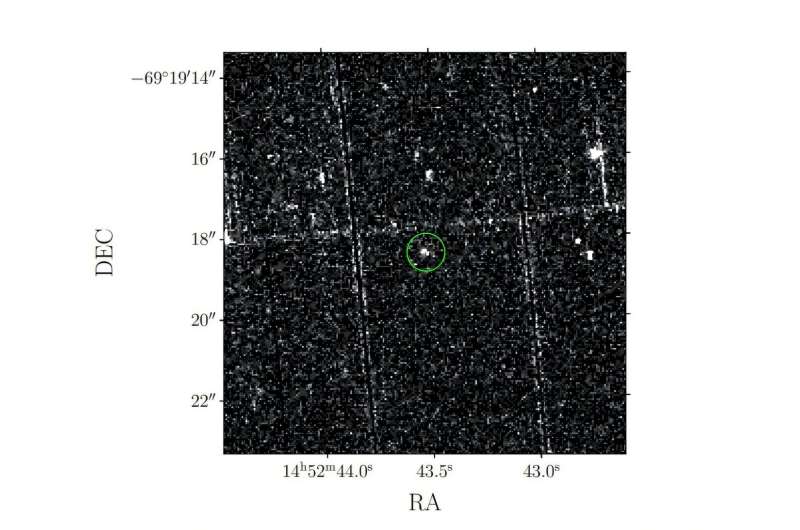An international team of astronomers has announced the discovery of a new long-period radio transient designated as ASKAP J144834−685644, or ASKAP J1448−6856 for short. This finding adds to the limited collection of known sources in this intriguing category. The discovery was detailed in a paper published on July 17, 2025, on the arXiv preprint server.
Long-period radio transients (LPTs) are a newly identified class of astronomical objects characterized by their long rotation periods, which can range from minutes to hours, and their strong magnetic fields. While some observations suggest that these transients may originate from rotating neutron stars known as magnetars or from magnetic white dwarfs, their exact nature remains a mystery for researchers.
Significance of the Discovery
The Australian Square Kilometre Array Pathfinder (ASKAP), a 36-dish radio interferometer located in Australia, operates within the frequency range of 700 to 1,800 MHz. One of its primary scientific goals is to characterize the transient radio sky by detecting and monitoring variable sources. The latest detection was led by Akash Anumarlapudi from the University of Wisconsin–Milwaukee, who and his team focused on identifying circularly polarized sources. During their observations, they discovered ASKAP J1448−6856, which exhibited highly variable emissions in both linear and circular polarization.
The researchers noted, “We report the discovery of a new LPT, ASKAP J1448−6856. Discovered as a 1.5-hour periodic radio source, ASKAP J1448−6856 shows a steep spectrum, elliptical polarization, and periodic narrowband emission that declines at frequencies above 1.5 GHz.”
This new LPT presents a harmonic frequency structure along with polarized bursts. Notably, its emission is elliptically polarized, with the polarization fraction varying from 35% to 100% across different observations. Unlike many other LPTs, ASKAP J1448−6856 has been detected across multiple wavelengths, including X-rays and optical bands, making it one of the few LPTs to exhibit such broad-spectrum variability.
Implications for Future Research
The multiwavelength modeling of ASKAP J1448−6856’s spectral energy distribution (SED), combined with its radio characteristics, suggests the object may be a near-edge-on magnetic white dwarf binary system with a magnetic field strength exceeding 1,000 Gauss. The authors of the study also entertain the possibility that it could be an isolated white dwarf pulsar or a transitional millisecond pulsar-like system.
The discovery of ASKAP J1448−6856 is significant for expanding the understanding of the LPT population. The researchers concluded, “Combining ASKAP J1448−6856 with the growing number of long-period radio transients adds to the variety of multi-wavelength behavior and will help deepen our understanding of this emerging population.”
This latest finding not only contributes to the ongoing research into LPTs but also encourages further exploration of their diverse properties and origins. The collaborative efforts of astronomers worldwide continue to enhance our knowledge of the universe, shedding light on its most enigmatic phenomena.
The research article detailing these findings was authored by Akash Anumarlapudi and colleagues, providing a valuable addition to the field of astrophysics.
